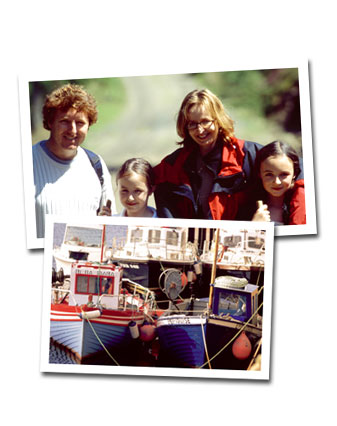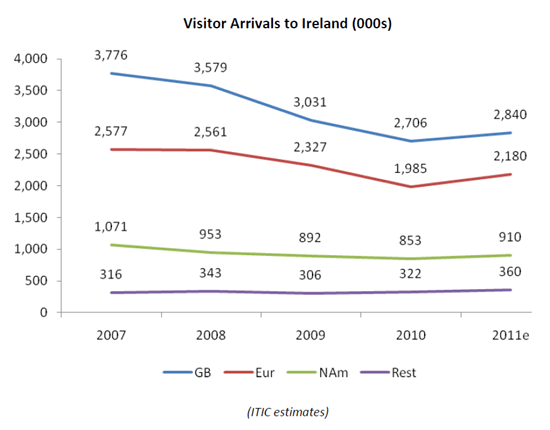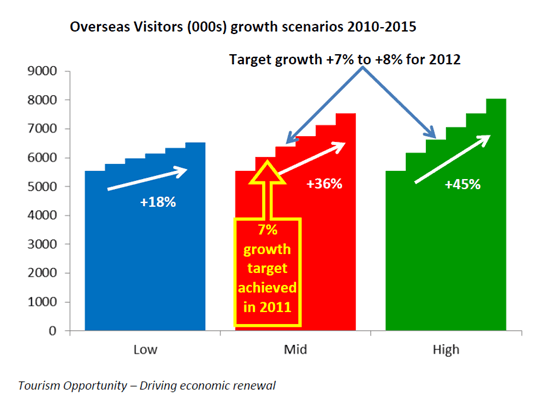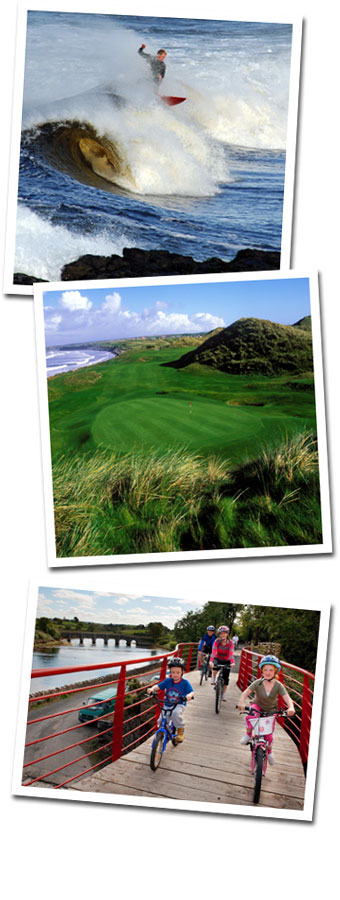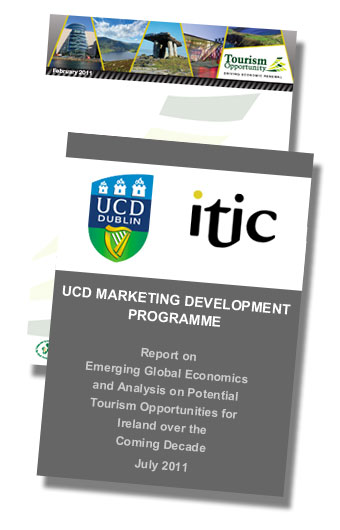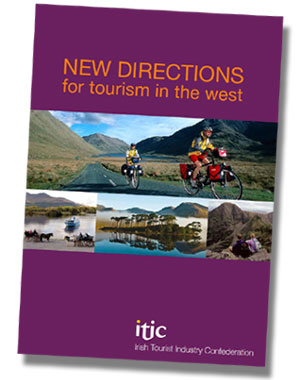
Irish tourism in 2011 will be remembered as a year of positive developments for the industry, despite the economic turmoil and slow growth in demand for international travel. The year began with the publication of a seminal report from ITIC ‘Tourism Opportunity – driving economic renewal’ setting out an ambitious 10 point plan for returning Ireland’s tourism industry to growth. This bold report from a coalition of stakeholder businesses found acceptance amongst policy makers and in turn led to the new Government placing tourism centre stage in its Jobs Initiative. Recognising the potential of tourism to drive economic recovery, the Government reduced VAT from 13.5% to 9% on most tourism services, halved the PRSI rate on employees earning below €370 per week, made the visa requirements easier for long haul visitors, at least on a temporary basis, and proposed the abolition of the €3 travel tax. The measures helped to go some way to restoring Ireland’s loss of competitiveness in the international marketplace. As expected the early part of the year was marked with a bounce back in arrivals compared to a year earlier, which was disrupted by the closure of air space due to volcanic ash and severe weather. As the year progressed the rate of growth decelerated to a low single digit level in August, and an estimated low double digit decrease in October. The outcome for the year now looks like 7% more visitors from overseas compared to 2010, based on the latest available data from the CSO for the period January to October. As yet it is not possible to determine how the level of holiday visitors from abroad performed in 2011, compared to visits for business or visiting friends and relatives. On the domestic market front, despite the severity of the downturn in disposable incomes and consumer confidence, the indications are that the number of leisure trips taken within Ireland held up well, although consumers were reported to be carefully watching their expenditure. Demand for domestic leisure travel benefitted from some substitution as Irish residents took 10% fewer overseas trips. As in previous years the picture from around the country varied, with Dublin reporting a good season, with hotel occupancy and achieved rates up on the previous year. In contrast, businesses in many other parts of the country struggled to remain viable as some areas did not see increased visitor numbers. Early indications suggest that the numbers employed in the hospitality sector grew by about 6,000 after seasonal adjustments, although the tourism sector was not immune to some business closures. The lack of access to credit continued to add to the burden for many businesses in the hospitality sector. The positives of the past year, including movement to recovering competitiveness, growth in visitor numbers from Ireland’s top source markets and some improvement in the fortunes of businesses in the sector, provide a sound foundation for further recovery. The industry has yet again proved its resilience but is still a long way off the level of demand enjoyed in 2007, a record year for the industry. |
| ||||||||||||||||||||||||||||
The outcome for the year measured in visitor arrivals is one of modest recovery when the extraordinary factors of 2010 are discounted. While the early part of the year saw some double digit year on year growth rates, visitor arrivals for the 3 months August to October did not increase over the same period last year, but dipped 0.2%, according to the latest CSO release. August – October arrivals from Britain fell by 1.7%, while North American arrivals were down 2.5% and the number of Europeans increased by 2.4%, compared to the same period in 2010. To put the estimated 7% increase in visitor arrivals in context, the 2011 likely outcome is almost 7% behind 2009 and nearly 18% lower than in 2008. Compared to 3 years ago, arrivals from Britain are down by more than 20%, Continental Europe down 15%, while long haul markets are encouragingly close to the same level. The upturn in arrivals in 2011 would suggest, on the basis of limited data available, that Ireland has performed slightly better than many other European destinations in terms of year on year growth. However, Ireland’s market share remains below where it was four years ago in most markets, as the downturn to Ireland over the period has been steeper than for most of our competitors, with several other countries experiencing an upturn in 2010. Some 2011 tourism industry highlights include:
|
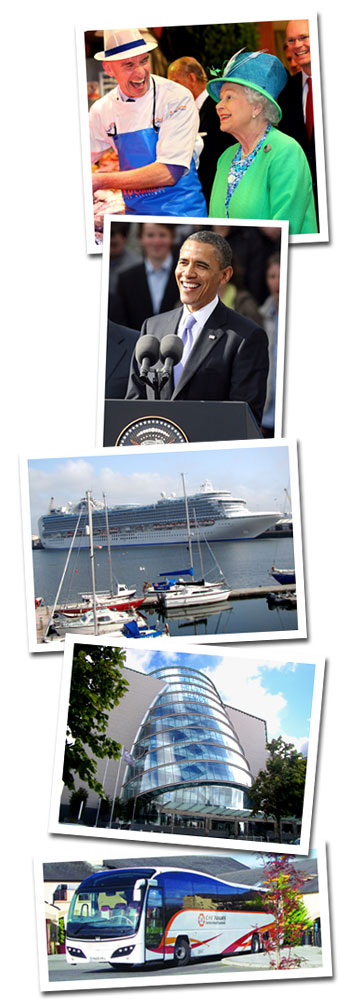 |
||||||||||||||||||||||||||||
|
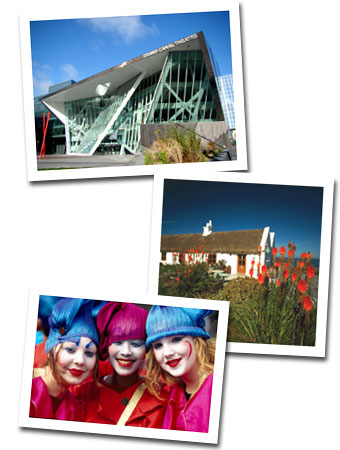 |
||||||||||||||||||||||||||||
|
The outlook, at best, is uncertain as prospects for the year ahead have been deteriorating in recent months. The global macro-economic environment is critically dependent on whether the Eurozone crisis is resolved. Various forecasts, all recently downgraded, range from low economic growth through stagnation to recession. The recently published OECD economic outlook clearly demonstrates the severe downside risk of the Eurozone crisis. In a worst case scenario, should the Eurozone crisis evolve into a full-blown sovereign and banking debt crisis, demand for travel would fall as Europe slips in to recession. Critical to future demand for travel will be consumer confidence levels and behaviour patterns – the latter in recent years have not always slavishly mirrored economic metrics. Planning demand scenarios for travel in 2012 has never been more challenging. The best case scenario of low economic growth could be realistically expected to grow demand for international travel at close to +3%. However, the possibility of the Eurozone crisis deteriorating into a renewed banking crisis which in turn would cut global GDP growth to less than 1% would have serious implications for the travel industry. Negative consumer sentiment coupled with austerity measures, including high travel taxes, across most source markets has the potential to cause a double dip travel recession. This worst case scenario is potentially most serious for intra-European travel.
|
 |
||||||||||||||||||||||||||||
The challenge facing Ireland is to continue to grow its tourism despite the poor macro-economic environment. As a small niche player on the global stage this environment represents an opportunity for Ireland, with the industry working with Government to restore competitiveness and maintain investment in marketing. Even in the most severe downturn there are pockets of opportunities. The continued viability of many businesses and reversing the unemployment trend demands that tourism in 2012 continues to grow. Furthermore, simply matching the average growth rate will not be good enough – Ireland needs to target growth of upwards of between 5% and 10% for the year ahead, to restore financial stability to the industry and provide enhanced exchequer returns. This calls for a market beating strategy, which emphasises the difference or positive advantages and focuses on where best to compete. Identifying the ‘who’ and the ‘where’ is more critical to success than the ‘how’. Ireland as a destination can no longer afford to market ‘in Germany’, but rather needs to target defined segments with distinctive motivations to visit – for example, reaching those with an interest in hill walking living in Munich. The challenging market conditions call for a more granular marketing approach together with a flexibility to reallocate resources as opportunities shift between markets and segments. Some positives for the year ahead include an increase in air services with some exciting new routes; a likely decrease in oil prices keeping fares at about the same level; a currency advantage for the high spending US visitor; several high profile conferences and events, including the Eucharistic Congress, the Volvo Ocean Race, Dublin’s City of Science, an opportunity to piggy back on the London Olympics, and the launch of Ireland’s biggest ever tourism initiative “The Gathering”. The Gathering will have three core audiences – the global diaspora, people of non-Irish extraction living overseas who have an affinity with Ireland and the people of Ireland, who themselves will be both the creators of, and a core audience for The Gathering. The inaugural Gathering will take place in 2013 with a unique one year focus on special one-off events and gatherings. It will have a pivotal role in making Ireland a destination of exceptional appeal for the diaspora and visitors generally, motivating them to participate, learn and celebrate all that is good about the people, the place and the pace of life. It will showcase Ireland at its best. |
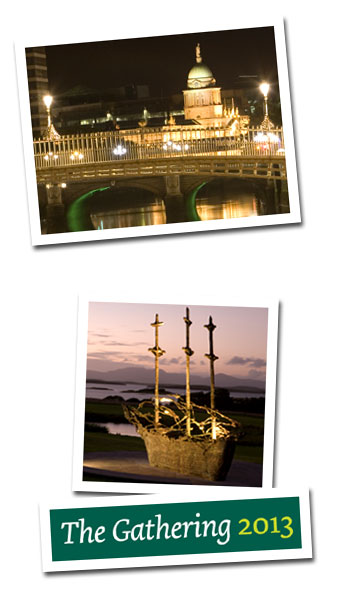 |
||||||||||||||||||||||||||||
|
Convenient and competitive air and ferry services continue to be critical to the development of tourism. While aggregate capacity on air services in 2011 was only marginally ahead of 2010, growth in tourism was not impeded due to the availability of unfilled seats and a 10% drop in Irish originating demand. Air services over the past summer saw a 7% increase in transatlantic capacity, with a new Charlotte service operated by US Airways. The number of routes from 107 gateways across mainland Europe increased with capacity up 3%, while cross-channel services were marginally down. 2011 marked the closure of several PSO routes connecting domestic regional airports with Dublin which resulted in the subsequent suspension of scheduled air services to/from Sligo and Galway. The end of the season saw some changes in cross-channel ferry services with the suspension of Stena Line’s HSS Holyhead-Dun Laoghaire route and the appointment of an examiner to Fastnet Line, the operator of the Swansea-Cork service which is also currently suspended. Preliminary schedules for summer 2012 include a number of exciting new air services of potential for inbound tourism. New services will connect the west of Ireland with top European source markets, including Ryanair’s new routes to Knock from Paris, Frankfurt, Milan and Barcelona, together with Lufthansa’s new Dusseldorf-Knock service. Aer Lingus, in addition to increasing frequency on selected routes, will launch services from Stockholm and Verona. At the same time Lufthansa, Iberia and SAS are each increasing capacity on their Ireland routes. United will launch a new Washington (Dulles)-Dublin service, while Emirates’ new Dubai service will enhance connectivity from other long haul markets. |
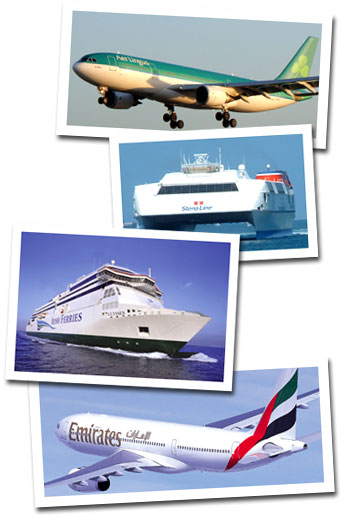 |
||||||||||||||||||||||||||||
The Tourism Recovery Taskforce (TRT) was formed in early 2011 to mastermind a speedy return to growth in inbound tourism from Ireland’s top four source markets. The TRT, one of the key recommendations of Tourism Opportunity – Driving economic renewal and chaired by Ms. Vivienne Jupp, is a new paradigm in collaboration between businesses and the state agencies. The other members are:
The TRT, is focused on overseeing the development and implementation of strategies to deliver growth against defined targets for holiday visitors, and is already shaping the future. The remit includes supporting improved customer focus by ensuring the visitor experience is in tune with market demands, is competitive and conveniently accessible as well as ensuring that communication campaigns are cost effective. Addressing the collapse over recent years of the holiday market from Britain, Ireland’s No. 1 source market, was top of the TRT’s agenda. A fundamental review, including new consumer research, of Ireland’s appeals, target markets, competitive positioning and communication channels has been undertaken. This project is now well advanced and is shaping up to be a pivotal milestone in the marketing of Ireland in Britain. In addition, new Marketing Partnership Groups have been set up for each of the four top source markets to facilitate greater engagement with the industry and market based distributors in shaping the marketing strategies and delivering effective campaigns. Over the coming year, in depth reviews of each market will be undertaken to ensure that Ireland is correctly positioned and communicated to defined target audiences with the goal of delivering the maximum return on investment for Ireland’s tourism businesses.
|
|
||||||||||||||||||||||||||||
|
In addition to 'Tourism Opportunity – Driving economic renewal', ITIC has produced two major reports within the past year to help shape the future of the industry and to assist businesses to better position themselves to capitalise on opportunities.
New Emerging Markets - Which Ones Are Real? Global economic growth in recent years has been largely driven by the ‘new economies’ including those in Asia and Latin America. The so-called BRIC nations – Brazil, Russia, India and China – have accounted for 40% of the world’s economic expansion and are now more important drivers of economic growth than the G7 industrial nations. Aircraft manufacturers’ order books are peppered with large orders from the Asia Pacific region and other fast growing emerging economies as an expanding middle class increasingly embrace travel. To explore what this means for Ireland’s tourism industry, ITIC engaged the UCD Smurfit School of Business to assess the real potential of these new and emerging markets. The report finds that while demand for international travel is growing at a fast pace from most of the new economies, the pattern of demand is largely for travel to destinations within the same region of the world. While demand for travel to Europe is growing, it is from a small base with the destinations most in demand being the high profile cities or European ‘honey pots’ and countries with historical or cultural ties with the emerging source markets. The opportunities for Ireland are limited, at least in the short to medium term. However, the report recommends that Ireland maintain a presence in the top emerging markets for international travel but that the allocation of resources should not be disproportionate to the opportunity. Attracting visitors from the newer markets to Ireland presents many challenges, including visa entry requirements, convenient air services together with language, cultural and dietary variances. The report makes good reading with plenty of statistics and insights into the level of travel demand from a number of new markets to Europe and to the United Kingdom. CLICK HERE for the Executive Summary of the report (PDF format) |
|
||||||||||||||||||||||||||||
New Directions for Tourism in the West Over the past decade or more, the western seaboard has been attracting a decreasing share of holiday visitors to Ireland. The decline in the number of visits and bednights spent between Donegal and Cork has meant a loss of employment and economic benefits to areas of the country with few alternative industries. The changed pattern of demand was found to be due to a combination of changed consumer holiday patterns and behaviour as well as the west failing to project sufficiently compelling reasons to visit. The latter is perhaps surprising given the prominence given to scenic locations, attractions and activities located in the western part of the country in all tourism promotional materials for Ireland. The report, prepared by TTC - Tourism & Transport Consult International, based on analysis and in-depth engagement of stakeholders along the western seaboard, concluded that greater innovation is urgently needed to attract more overseas visitors to the west of Ireland, if the trend of fewer holidaymakers going west is to be reversed. Today’s visitors seek more unique experiential and participative experiences. While the west of Ireland has in the past showcased the quintessential appeals of Ireland, the scenery of the Atlantic coast is no longer alone sufficient to attract overseas tourists. The report points to the need to highlight more the range of adventure and activity holidays on offer together with ‘dialling up’ the appeals of local heritage, contemporary culture, eco/nature, music and the arts, the islands, the Gaeltacht, local food, and the range of festivals and sporting events. A series of recommendations on developing new experiences, improving competitiveness, making access to the west more convenient, together with sharper and more focused marketing will form the agenda for a programme to reverse the tourism fortunes of the western seaboard. Over the coming months ITIC will be working with the industry to implement a pro-active programme to attract more overseas holiday visitors to the western half of the country. CLICK HERE for the report (PDF format)
|
|
||||||||||||||||||||||||||||
|
|||||||||||||||||||||||||||||
